Fort Lingan
|
Fort Lingan (1940 - 1953) - Fort Lingan was a long-range counter-bombardment coastal gun battery situated 4 miles east of the entrance to Sydney Harbour, Cape Breton County, Nova Scotia, Canada. HistoryPart of the Harbor Defense of Sydney. World War II (1939-1945)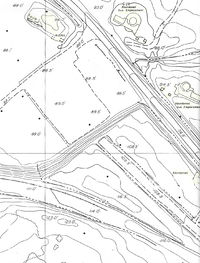 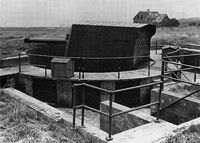 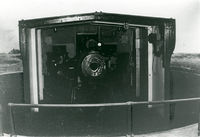 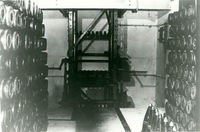 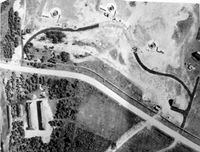 Lingan Battery was constructed in 1940 by J.P. Porter and Sons at a cost of approximately $200,000 (including land and services). Three 6-inch MK7 quick-firing guns were emplaced in three widely separated batteries, some 300 feet from each other and each emplacement was a self-contained unit with its own deep magazine. A long-range battery on an exposed headland was the most likely target for heavy enemy bombardment, and these design features were intended to ensure that a direct hit on one position could not disable the others. Other battery armament included a one 20mm Hispano anti-aircraft gun, with another 3.7-inch AA gun added in 1945. The fort had two separate observation posts onsite, the battery commander's observation post and plotting room were located in a two-story concrete structure disguised to look like a one-and-a-half-story private clapboard home. The concrete walls were molded like lap board siding on the side of a house and the roofs were pitched to complete the camouflage. On the upper level was a pedestal for a depression range-finder that directed the guns for close in fire. Dug into the top of the high ground some 1000 feet behind the gun positions, with only a view slit showing seaward, was a large flat building. This was the combined battery observation post and battery plotting room that directed long range fire. In the front part of the building was a pedestal for a position finder, essentially a larger and more complex version of the depression rangefinder, one that delivered more accurate ranges and bearings. The rear part of the building, the battery plotting room, was designed to house the fire-direction table and other instruments necessary for accurate long-range shooting. The fort included wooden barrack buildings on the low ground southwest of the gun positions. Approximately eighty infantrymen were stationed at Fort Lingan, and they were responsible for the security of the shoreline in the New Waterford area, in addition to guarding the fort itself. Another 130 men made up the fort's artillery garrison. Temporary wooden huts, serving as fire-control observation posts, were also located in New Waterford and at North Head. These were eventually replaced with proper concrete fire-control observation posts. A secondary Naval signal station was located in on high ground in Scotchtown. In 1941 the three modern 6-inch caliber guns on 45-degree mounting with turret-style shields enclosing all but the rear, weighing thirty-five tons, were delivered to the Lingan battery. These were high angle coastal mounts allowing a maximum firing elevation of 45 degrees giving a range of 25,100 yards (23 km. or 12.4 nautical miles). Unfortunately, the original cams and sights were on a ship that was sunk while on it way to Canada and so substitutes had to be improvised. Together with the batteries at Fort Oxford to the north-west, the guns at Fort Lingan could keep a modern cruiser beyond effective gun range for a length of the coast of over 50 miles, stretching from St. Annes Bay to the north to Mira Gut in the east. In winter, the snow quickly filled the gun positions at this wind-swept battery. Regimental Sergeant-Major George M. Fraser recalled the trouble taken to keep the gun in working order in cold weather:
Three old people living in a rundown house beside Lingan Battery had refused to move, even when a new home was built for them across the road. Before the battery fired for the first time, they were advised, once again, to move."No," said George, "they weren't going to move, so we fired No. 1 gun and the barn fell down and, they moved. The 6-inch gives quite a 'whump' when it goes off." Post World War II (1946-1953)In 1947 and 1948, the army stripped the coastal fortifications and placed the equipment into immediate reserve at Fort Petrie and Killkenny Barracks where it could be properly preserved, ready for quick reinstallation should war again seem likely. At Oxford and Lingan, only the main components of the heavy guns at were left in place under the charge of a few caretakers. In 1953 or 1954 the stored equipment was removed, possibly shipped to NATO partners in Europe still conceivably at risk of naval assault on their shores. Current StatusThe battery site is located mostly on Crown Land, immediately beside the road. The road was relocated sometime in the past and now runs over top the former location of the westernmost of the gun emplacements. All gun emplacements have been filled in. A two-story fire-control concrete observation post stood until some time after 2004 but has since been demolished. The fire-control observation post located at North Head is still standing. All of the remaining concrete structures are damaged and covered in graffiti. No period guns or mounts in place.
Sources:
Links:
|